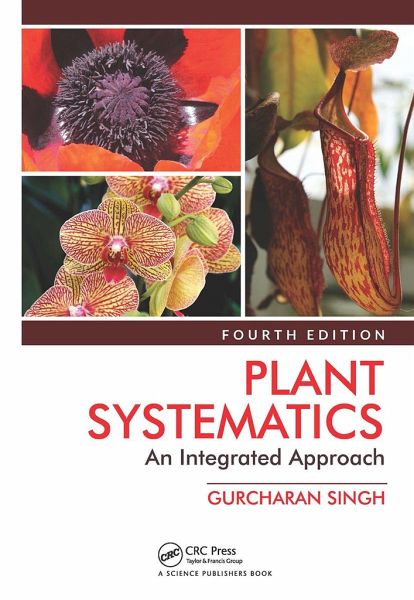
Plant Systematics
An Integrated Approach, Fourth Edition

PAYBACK Punkte
130 °P sammeln!
This fourth edition of Plant Systematics is completely revised and updated. It incorporates the updated International Code of Nomenclature for Algae, Fungi and Plants (Shenzhen Code, 2018), the new version of PhyloCode (Beta version of Phylocode 5, 2014), APweb version 14 (September, 2018), revised Angiosperm Phylogeny Group classification (APG IV, 2016), new Pteridophyte Phylogeny Group Classification (PPG I, 2016), besides the updates since the publication of third edition. The book is a blend of classical fundamental aspects and recent developments, especially in the field of molecular syst...
This fourth edition of Plant Systematics is completely revised and updated. It incorporates the updated International Code of Nomenclature for Algae, Fungi and Plants (Shenzhen Code, 2018), the new version of PhyloCode (Beta version of Phylocode 5, 2014), APweb version 14 (September, 2018), revised Angiosperm Phylogeny Group classification (APG IV, 2016), new Pteridophyte Phylogeny Group Classification (PPG I, 2016), besides the updates since the publication of third edition. The book is a blend of classical fundamental aspects and recent developments, especially in the field of molecular systematics, cladistics and computer identification. Special attention has been given to information on botanical nomenclature, identification, molecular systematics and phylogeny of angiosperms. The complicated concepts of phylogeny, taxometrics and cladistics have been explained with a view to providing a comparison between these diverse but interactive fields of study. An attempt has been made to build upon a common example when exploring different methods, especially in procedures of identification, taxometrics and cladistics. The major systems of classification are evaluated critically. Discussion on major families of Pteridophytes, Gymnosperms and Angiosperms, especially those of major phylogenetic interest, form a major portion of this edition. The ebook includes nearly 500 color photographs set out in 36 pages covering plants from different parts of the world. In addition, 305 black & white illustrations have been included to provide a better understanding of the plants covered in the book.














